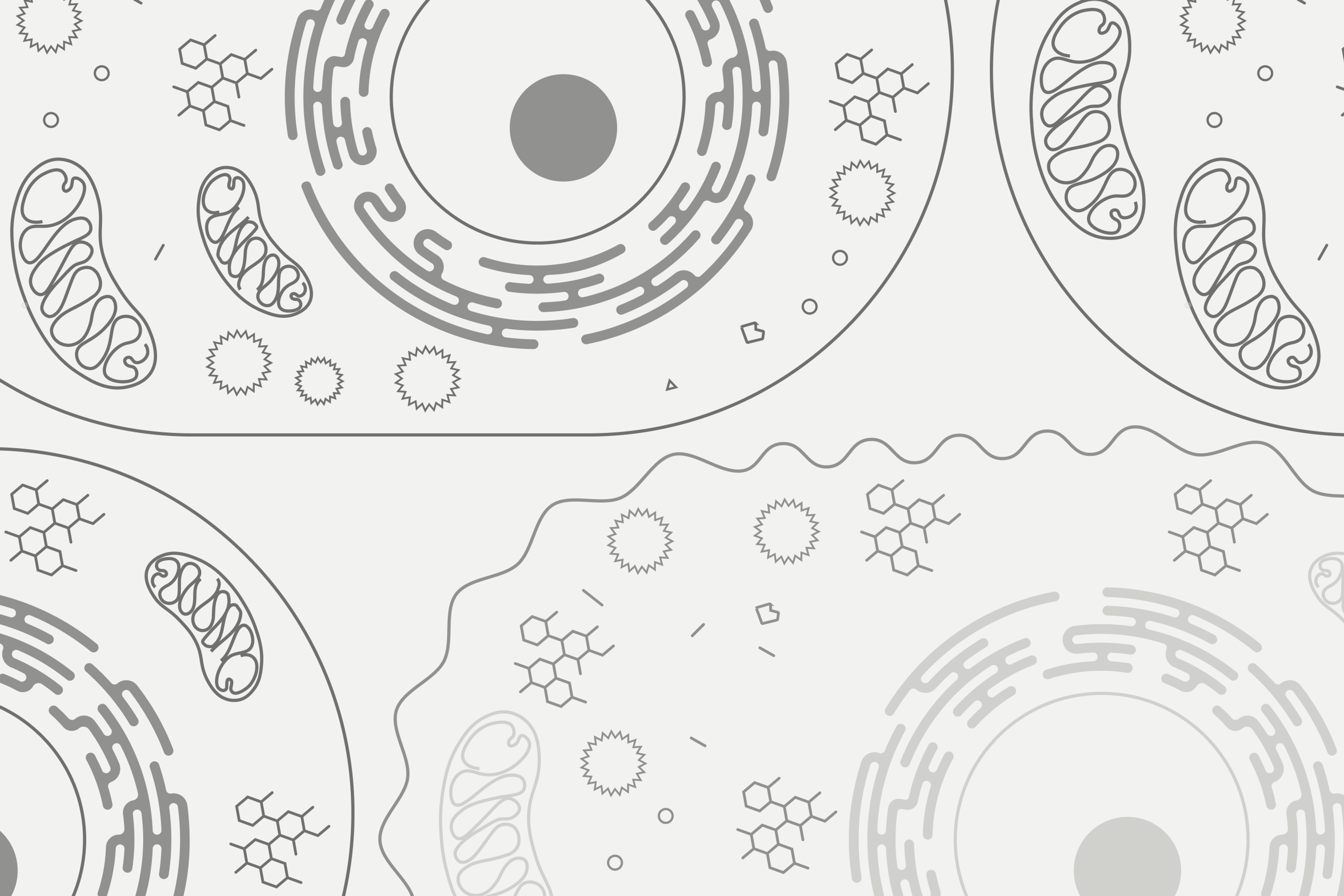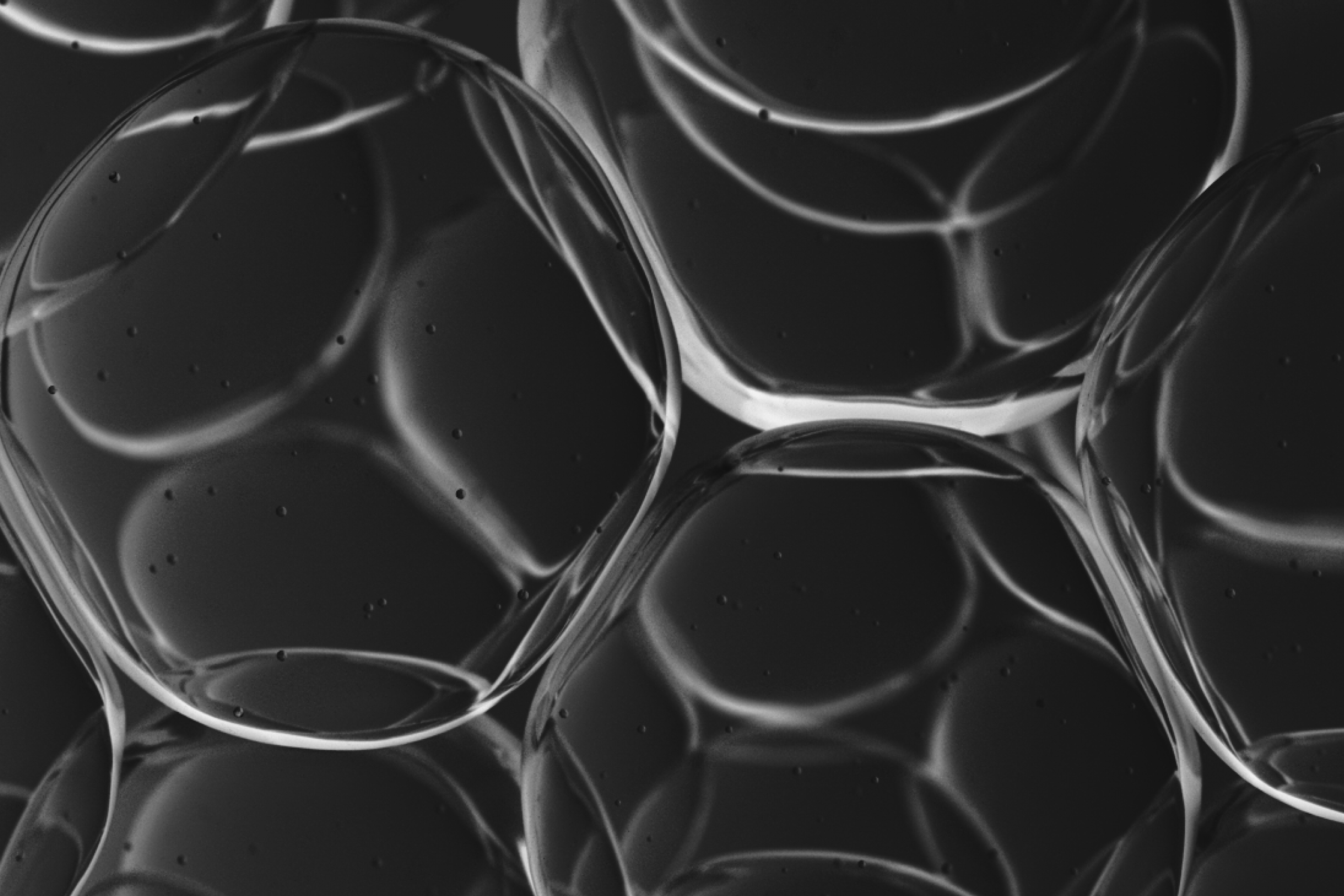Cell senescence: aging, disease, and the fountain of youth
Unlocking the secrets of cellular aging: a journey into the intriguing world of cell senescence and mitochondrial health

November 09, 2023
7 min read
Key takeaways
- Cell senescence refers to the inability of cells to divide and is one of the hallmarks of aging.
- There are several stages of cell senescence, which include induction of senescence, SASP production, accumulation of senescent cells, and chronic inflammation.
- Cell senescence may be counteracted through various strategies, such as exercise and consumption of foods high in antioxidants.
- Enhancing mitochondrial health is an important part of counteracting cell senescence, as mitochondrial dysfunction is both a cause and consequence of this issue.
Cell senescence and healthy aging
Cellular senescence is a hallmark of aging and is a fundamental process with implications for human health and longevity. Senescent cells are cells that lost their ability to divide yet have not died. Studying this process can help scientists learn more about how cells handle stress, particularly genetic damage, and how this impacts larger processes like disease development and aging.[1]
Understanding senescence
Cell senescence reflects a state in which cells are no longer functioning normally. Healthy cells undergo a process of division, but this process declines over time. Cells then lose the ability to divide but remain alive. The term “replicative senescence” is also used to refer to the state of permanent cell cycle arrest.[2]
Cell senescence is considered one of the twelve hallmarks of aging, which are all tightly interconnected.[3]It is caused by cell damage and is linked to diseases of aging,[4] such as kidney disease, metabolic syndrome, diabetes, atherosclerosis, Alzheimer’s, and Parkinson’s.[5]
Cell senescence is closely tied to mitochondrial dysfunction. The mitochondria are considered the “powerhouse” of the cell and generate energy. Mitochondrial dysfunction has been identified as both a cause and consequence of cell senescence and plays a role in maintaining the senescent state.[6]
In considering these concepts, it is important to distinguish between cell quiescence vs senescence, as these terms are often used interchangeably. Quiescence is considered to be a reversible state of cell cycle arrest, whereas senescence is considered irreversible. In contrast with quiescence, senescence is a degenerative process that ends with certain cell death.[7]

Stages of senescence
Stages of senescence
Cell senescence occurs in a feedback loop in which there is stress to the cell, senescence is induced, senescent cells accumulate, and there is chronic inflammation. There are several phases in this process and senescence markers to consider.
Induction of cell senescence
Senescence can be induced by many different stimuli. For example, DNA damage may cause many different types of cells to undergo senescence. Certain drugs, such as those used in chemotherapy, are one cause of this type of damage, which induces senescence in both tumor and normal cells.
Other causes of cell senescence include mutations in normal genes that transform cells, as well as stress. Chronic inflammation in the body that is evident in the sustained activity of proteins, called cytokines, may also promote senescence.
Telomere shortening is also implicated in the development of cell senescence. A telomere is a region of repetitive DNA sequences at the end of a chromosome. These become shorter every time a cell divides and eventually become too short to allow the cell to continue to divide.[8]
SASP production
Part of the development of cell senescence is the senescence-associated secretory phenotype (SASP). Senescent cells continue to be active but behave differently than normal cells. These cells secrete proteins that indicate a state of inflammation and affect surrounding cells.[9]
SASP development is implicated in the progression of chronic disease. For example, senescent cells and the SASP can induce changes in nearby cells that are common during cancer progression.
Senescent cell accumulation
Senescent cells accumulate in the body in different tissues and organs where they have different functions, some of which may be associated with disease.[10]With age, the senescent cells that accumulate compromise the structure and function of these various organs, and the accumulation has been observed in many disorders and diseases in humans, such as frailty, dementia, chronic kidney disease, and osteoarthritis.[11]
Chronic inflammation
During the aging process, senescent cells accumulate and promote inflammation that accelerates aging. This is evident in the proteins these cells secrete, which are pro-inflammatory. The theory of “inflammaging” suggests that low and chronic levels of inflammation can drive age-related decline in function.[12]
Senescent cells are known to contribute to inflammation in two ways. First, cell senescence amplifies the SASP and promotes inflammation. Second, immune senescence results in impaired immune function[13] and a reduced rate of clearance of senescent cells. The accumulation of these cells further contributes to inflammation.[14]

Counteracting cell senescence
There are numerous lifestyle factors that may be used to counteract cell senescence. Exercise is one such practice, and has been shown to have anti-aging effects to counteract cell senescence and inflammation. It is known to have the capacity to reverse many of the hallmarks of aging.[15]
Dietary strategies are also an important part of counteracting cell senescence. Intake of antioxidant compounds such as polyphenols, for example, may inhibit the SASP in senescent cells and have anti-aging effects. Polyphenols may also work to improve mitochondrial function.[16]
Some studies have examined the effects of particular polyphenols on cell senescence and the aging process. For example, resveratrol and pterostilbene, polyphenols found in grapes and blueberries, have been shown to attenuate senescence. They also act on several other hallmarks of aging, including oxidative damage, inflammation, and telomere attrition.[17]
Improving mitochondrial health is a key part of counteracting cell senescence as well as chronic disease. Impairment of mitochondrial function has been associated with many age-related conditions, such as cancer, neurodegenerative disease, and metabolic disease, among others. [18]Given that mitochondrial dysfunction is an essential part of cell senescence, targeting the mitochondria is an important component of addressing this issue.
Final words
The aging process involves numerous changes to the body, and cell senescence is a key part of this. Senescent cells accumulate in the body and promote an inflammatory response associated with disease. Addressing cell senescence is an important focus when it comes to healthy aging, and numerous changes to lifestyle may play a role.
References
- ↑
Campisi J, d'Adda di Fagagna F. Cellular senescence: when bad things happen to good cells. Nat Rev Mol Cell Biol. 2007 Sep;8(9):729-40. doi: 10.1038/nrm2233. PMID: 17667954.
- ↑
Liu J, Wang L, Wang Z, Liu JP. Roles of Telomere Biology in Cell Senescence, Replicative and Chronological Ageing. Cells. 2019 Jan 15;8(1):54. doi: 10.3390/cells8010054. PMID: 30650660; PMCID: PMC6356700.
- ↑
López-Otín C, Blasco MA, Partridge L, Serrano M, Kroemer G. Hallmarks of aging: An expanding universe. Cell. 2023 Jan 19;186(2):243-278. doi: 10.1016/j.cell.2022.11.001. Epub 2023 Jan 3. PMID: 36599349.
- ↑
Gorgoulis V, Adams PD, Alimonti A, Bennett DC, Bischof O, Bishop C, Campisi J, Collado M, Evangelou K, Ferbeyre G, Gil J. Cellular senescence: defining a path forward. Cell. 2019 Oct 31;179(4):813-27.
- ↑
Serrano M, Munoz-Espin D, editors. Cellular Senescence in Disease. Academic Press; 2021 Nov 27.
- ↑
Miwa S, Kashyap S, Chini E, von Zglinicki T. Mitochondrial dysfunction in cell senescence and aging. J Clin Invest. 2022 Jul 1;132(13):e158447. doi: 10.1172/JCI158447. PMID: 35775483; PMCID: PMC9246372.
- ↑
Terzi MY, Izmirli M, Gogebakan B. The cell fate: senescence or quiescence. Mol Biol Rep. 2016 Nov;43(11):1213-1220. doi: 10.1007/s11033-016-4065-0. Epub 2016 Aug 24. PMID: 27558094.
- ↑
National Human Genome Research Institute. Telomere. 2023. Accessed September 26, 2023. Available at https://www.genome.gov/genetics-glossary/Telomere.
- ↑
Coppé JP, Desprez PY, Krtolica A, Campisi J. The senescence-associated secretory phenotype: the dark side of tumor suppression. Annu Rev Pathol. 2010;5:99-118. doi: 10.1146/annurev-pathol-121808-102144. PMID: 20078217; PMCID: PMC4166495.
- ↑
Roger L, Tomas F, Gire V. Mechanisms and Regulation of Cellular Senescence. Int J Mol Sci. 2021 Dec 6;22(23):13173. doi: 10.3390/ijms222313173. PMID: 34884978; PMCID: PMC8658264.
- ↑
Khosla S, Farr JN, Tchkonia T, Kirkland JL. The role of cellular senescence in ageing and endocrine disease. Nat Rev Endocrinol. 2020 May;16(5):263-275. doi: 10.1038/s41574-020-0335-y. Epub 2020 Mar 11. PMID: 32161396; PMCID: PMC7227781.
- ↑
de Keizer PL. The Fountain of Youth by Targeting Senescent Cells? Trends Mol Med. 2017 Jan;23(1):6-17. doi: 10.1016/j.molmed.2016.11.006. PMID: 28041565.
- ↑
Ovadya Y, Landsberger T, Leins H, Vadai E, Gal H, Biran A, Yosef R, Sagiv A, Agrawal A, Shapira A, Windheim J, Tsoory M, Schirmbeck R, Amit I, Geiger H, Krizhanovsky V. Impaired immune surveillance accelerates accumulation of senescent cells and aging. Nat Commun. 2018 Dec 21;9(1):5435. doi: 10.1038/s41467-018-07825-3. PMID: 30575733; PMCID: PMC6303397.
- ↑
Guerrero A, De Strooper B, Arancibia-Cárcamo IL. Cellular senescence at the crossroads of inflammation and Alzheimer's disease. Trends Neurosci. 2021 Sep;44(9):714-727. doi: 10.1016/j.tins.2021.06.007. Epub 2021 Aug 5. PMID: 34366147.
- ↑
Carapeto PV, Aguayo-Mazzucato C. Effects of exercise on cellular and tissue aging. Aging (Albany NY). 2021 May 13;13(10):14522-14543. doi: 10.18632/aging.203051. Epub 2021 May 13. PMID: 34001677; PMCID: PMC8202894.
- ↑
Yessenkyzy A, Saliev T, Zhanaliyeva M, Masoud AR, Umbayev B, Sergazy S, Krivykh E, Gulyayev A, Nurgozhin T. Polyphenols as Caloric-Restriction Mimetics and Autophagy Inducers in Aging Research. Nutrients. 2020 May 8;12(5):1344. doi: 10.3390/nu12051344. PMID: 32397145; PMCID: PMC7285205.
- ↑
Li YR, Li S, Lin CC. Effect of resveratrol and pterostilbene on aging and longevity. Biofactors. 2018 Jan;44(1):69-82. doi: 10.1002/biof.1400. Epub 2017 Dec 6. PMID: 29210129.
- ↑
Lane RK, Hilsabeck T, Rea SL. The role of mitochondrial dysfunction in age-related diseases. Biochim Biophys Acta. 2015 Nov;1847(11):1387-400. doi: 10.1016/j.bbabio.2015.05.021. Epub 2015 Jun 4. PMID: 26050974; PMCID: PMC10481969.


